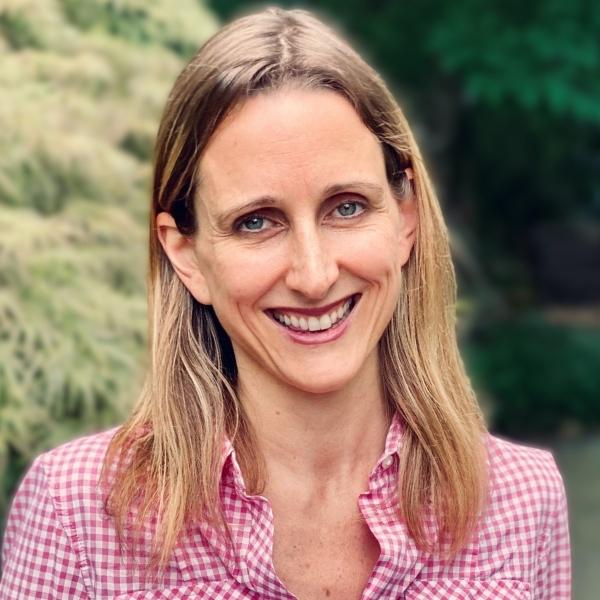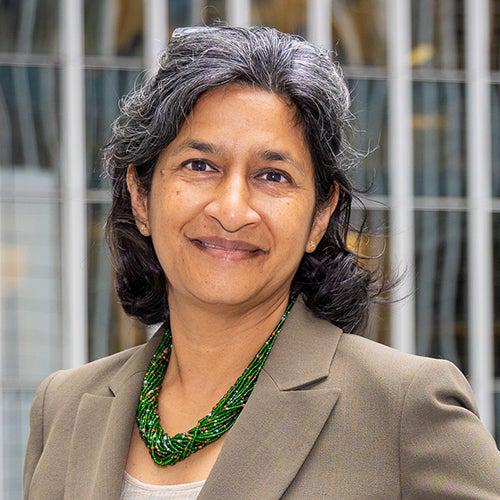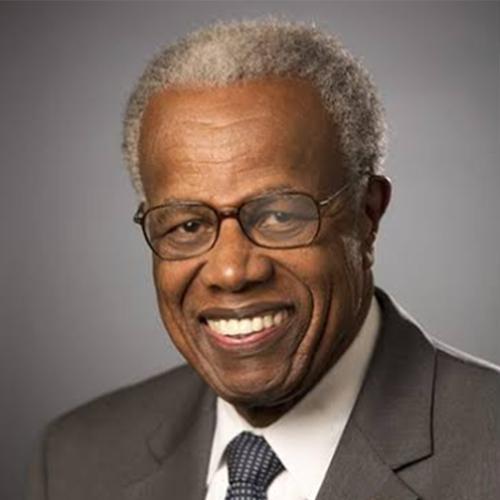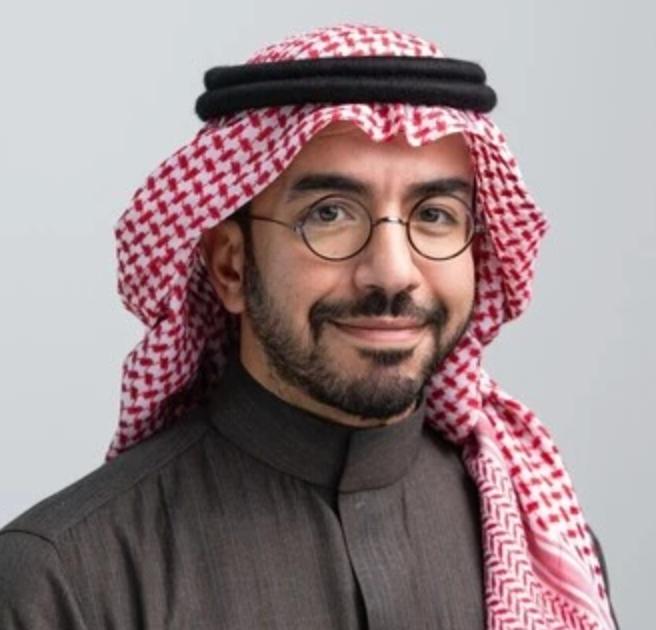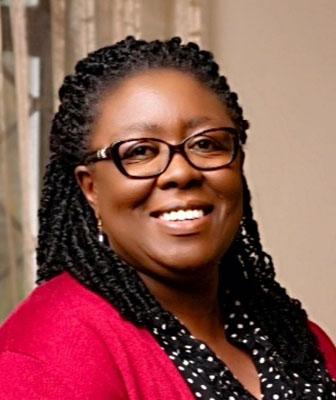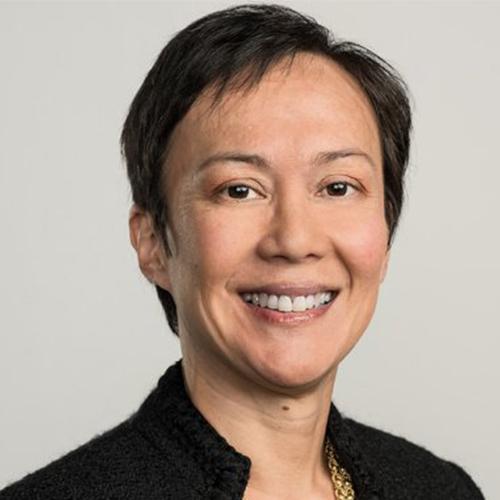[Lina Walker] Good morning, everybody. And good afternoon and good evening to those in other locations. Welcome to today's event. My name is Lina Walker. I am Senior Vice President for Global Thought Leadership at AARP. For those of you who don't know, AARP is the world's largest nonprofit, non-partisan, membership organization dedicated to empowering people, 50 and older, to choose how they live and as they age. We have been working with global partners since the early 1960s, in fact, to support older adults all around the world because we believe that we need to elevate global aging and its issues and understand the implications for global development. I am so delighted to be here today to moderate today's discussion with our distinguished panelists. We are introducing a new World Bank report, “Unlocking the Power of Healthy Longevity: Demographic Change, Non-communicable Diseases, and Human Capital.” As an aside, I actually read the report cover to cover. So, I would encourage you to do so as well. In many parts of the world today, where the World Bank works, the average age of the population is actually quite young, but that is fast changing. In fact, between today and 2050, 85% of the growth in the 65 plus population will occur in low and middle-income countries. It's worth pausing at this time to say that the increase in life expectancy is really a remarkable achievement, and much of that progress can be attributed to the work of country leaders, those in this room and around the country and around the world, and with the support of the World Bank and other development leaders. At the same time, the trajectory of population aging is profoundly sobering. We know that population aging, not unlike issues of gender and climate change, is going to touch every aspect of society and our lives, from economic growth, labor supply, health care, immigration, and communities; but with early planning, we can ensure that everyone all over the world will thrive even as they age. And with this in mind, I congratulate the leadership and the staff of World Bank for this report, and to our esteemed experts in this room and remotely for participating in today's special launch event. It is only by sharing and learning from each other that can we really transform global aging into global opportunity. And you can count on AARP to partner with you to move this agenda forward. This event is streaming on World Bank Live, X, LinkedIn, YouTube, and the Bank has simultaneous interpretation in French, Spanish, and Arabic. For those of you watching online, we would love to hear from you. So, please put your comments and your questions in the chat on live.worldbank.org, and there are experts in multiple languages who are standing ready to respond. For those of you in the room, unfortunately, because of time constraints, we will not be able to take any questions in person, but you are welcome to remain after the event to follow up with our panelists. Before we begin with our panel discussion, let's watch this short video that will introduce us to healthy longevity and the report's findings.
[Video playing] [Narrator] Welcome to Unlocking the Power of Healthy Longevity. As the world undergoes a demographic transformation, the growing older population will bring many challenges, such as increasing need for hospitalizations and long-term care and a rise in premature deaths and disability. Low and middle-income countries will need to institute socioeconomic means to ensure the well-being of these citizens, preserving both quality of life and human capital, and health must be at the center of these concerns. To better understand these issues, the World Bank has conducted extensive research culminating in a report that lays out a comprehensive path to adding both quantity and quality of years to the life course, the Healthy Longevity Initiative. Visit the World Bank's website for the new report, Unlocking the Power of Healthy Longevity. [Video ends]
[Lina Walker] Thank you. Excellent framing for our discussion. Let's begin with our panel conversation. We have two sets of expert panels. For our panelists, we will be moving fairly quickly. You will have two minutes to respond to each question and to keep to time and to allow everyone a chance to respond. I may gently encourage you to wind down your remarks if you run a lot. For our first discussion, we will look more deeply at some of the report's key findings and highlight the importance of healthy longevity to build human capital. Our distinguished panelists are Mamta Murthi, Vice President, People Vice Presidency at the World Bank, Sir George Alleyne, Director Emeritus at PAHO, Dr. Mansour Al-Rumayyan, General Supervisor, Labor Market Affairs and Human Capital Development at the Ministry of Economy and Planning of Saudi Arabia. Welcome all three of you. Mamta, I'll put this first question to you to set the stage. The initiative is about unlocking the power of healthy longevity and taking a life-course approach. Can you explain to us what healthy longevity means? What does this longevity mean? What does this life course approach mean? And why is that so important for global development?
[Mamta Murthi] Thank you so much, Lina. We're really excited about being able to launch this report today with all our partners here. We know that longevity is a triumph of human endeavor and public policy. We know that people are living longer, and as the little clip showed, over a third of the population in developing and emerging markets will be over 60 years of age in 2050. That means that public policy needs to take a shift. People have longer lives, but they also need to have lives that are well-lived till the end, lives that are healthier. In the report, we make the point that this requires policy shifts in three dimensions. We call it “healthy living, prosperous living, and dignified living.” Why is this so important? This is important because ultimately what countries and societies and people achieve is the central focus of economic development. We break it down into these three areas because we want to focus on three very different dimensions of living longer. Healthy living means being healthy and productive till the very end. The interventions, the policies need to start much earlier in life because it's about building the fundamentals of good health, and that comes from nutrition, that comes from family planning, that comes from preventive measures, it comes from preventive care, and it comes from lifestyle changes. That's why at the World Bank, we have been emphasizing these aspects of building healthy longevity. As a part of our goal to reach one and a half billion people with better health care, we are emphasizing preventive measures that will prevent the onset of non-communicable disease. The second aspect of living longer is working longer. Many people need to work out of necessity, and some work out of choice. In fact, in developing countries, over half of the male population is working, over 65, and one-third of the female population is working over the age of 65. Here we talk about two kinds of things. One is supporting lifelong learning because people need to remain skilled in order to work. And the second thing we focus on is financial security because many people do not save enough to maintain a prosperous old age. We talk both about social pensions and about private pensions. And finally, let's talk about dignified longevity, dignified aging, and many people, as they age, live by themselves, they're not necessarily able to take care of themselves. There is… Public policy needs to think about care services for older adults. Moving beyond just care services, we have to think about things like, how do we design our cities? How do we design public transport? How do we design these other aspects of living so that older adults can remain engaged in their communities? So, I may have gone on a bit too long, and two minutes reminded me of the presidential debate from a couple of nights ago, and I'm sure I haven't done as well as those participants; but I think the thing that I really want to emphasize is that aging and longevity is an opportunity. I think it's a matter of flipping the narrative to this opportunity and having a holistic framework that will allow for healthy and productive aging, which is what this report is about.
[Lina Walker] Thank you very much for those remarks. I want to just pause on the opportunity part because you're going to see that thread throughout this conversation today. So, picking up on those three aspects of healthy, prosperous, and dignified. So, George, you've been working on healthy longevity for much of your life. Can you say more about some of the ways to promote healthy longevity and what might be some of the recommendations coming out of this report that would support healthy, prosperous, dignified?
[George Alleyne] The answer in this report, I suggest you read it. Sorry, the answer is in this report. So, I suggest you read it to get the answer to healthy longevity; but since the answer to the first part of the question lies in the messages, the recommendations of the report, let me spend a few minutes on the report, and then from that, set out the major recommendations. This report begins with the emphatic statement that human capital is the main source of wealth for the nation. 64% of the country's wealth derives from its human capital. What this report points out is that this human capital faces three challenges: the challenges of climate change, the challenges of pandemics, and challenges of the demographic process, which sometimes I call the “demographic tsunami.” But Mamta has elaborated, what is the benefit of healthy longevity. This report points out that if you wish to ensure healthy longevity, if you wish to ensure that this optimum development and deployment of human capital, the approach to take, and this is the first recommendation, that you should place emphasis, the key is to the prevention and control of non-communicable diseases throughout the life course. This report sets out the ways that this may be done. The first thing that it sets out with great clarity is the fiscal policies that should be put in place. The fiscal policy put in place, a turnaround, excise taxes on tobacco, alcohol, and sugar-sweetened beverages. Let me pause for a minute on tobacco. Our work all over the years, and Prabhat [Jha] has been a leader in this, there's still 1.1 billion smokers in the world. We contend in this report that probably the most important thing one can do to ensure healthy longevity and promote human capital is to stop smoking, is to prevent smoking. The report also sets out the clinical interventions that will be necessary to be applied through primary care. The second important recommendation is that there should be financial protection. There should be financial protection, especially to the vulnerable, including women and the poorest. The report also points out that this must be accompanied by provision for long-term care. The third recommendation is for the development of global public goods, global public goods. Here we stress data and development of tools such as dashboards, which will allow you to measure progress in the prevention and control of NCDs. And the final firm recommendation, which perhaps I should have put this first, the final firm recommendation is that the above must be applied at the country level. Here, let me first what Mamta said and read what President Banga has said in the Spring Meetings when he pointed out one of the core elements for providing health services to 1.5 billion people. And of those three core elements, let me read the first. He said, expanding our focus for maternal and child health to include coverage throughout the person's lifetime, including NCDs. I would submit that this report contains the tools to accomplish this. Thank you.
[Lina Walker] Thank you so much, George. Now, I'm going to pick up on your very last recommendation, which is about applying the interventions at the country level, because that's a great segue for us to get to Mansour's question. Now, Saudi Arabia has a unique demographic profile. It currently has a large youth population, but a fast-growing older population. What are the key policies that your country is adopting for an aging population? Could you give us an example?
[Mansour Al-Rumayyan] Sure. Thank you, Lina. And thank you for having me here. It's always great to be in the Bank. Saudi really stands at the crossroads of a demographic shift. The median age today is 29. Only 4% of the population is above 65; but our projections today are telling us that the population above 65 is going to increase fivefold in 2050 to 20%. For the government, this isn't just a statistic. It really is a transformation in the demographic structure of the country that requires two things: strategic foresight and bold action. At the heart of the way that, let's say, the policy responds to the aging population, it's really guided by a set of population policies that, as Sir George just said, it's not just about longer lives, it's about healthier lives and fulfilling lives. So, at the heart of the national agenda, there's the health transformation strategy that the country is going through. Designing a model of care that is patient-centered, that promotes the idea of, let's say, preventing the rise of non-communicable diseases. Virtual hospitals, telemedicine for the AIDS population or for the aging population. A lot of structural policies that reduce salt intake, that reduce oils, sweetened beverages to really tackle the NCD issue. So, that's the heart of the strategy dealing about the aging part. The utilization of care from that population that's less than 5% is around 70%, or 80% of all health care services. And that's huge. The second thing is also was alluded to is that longevity without financial stability is incomplete. This is where the pension reform happened in Saudi. We've gradually increased the age of retirement from 58 to 65. We've expanded the contribution of early retirement. That's something that's not just about the sustainability of the pension system, but it's also about how can people remain engaged, remain productive, and it's a vitality question that we're trying to tackle. So, that's in a nutshell how we're viewing this. We're seeing other countries in Europe, Japan, that are really trying to manage the complications of aging, and we're trying to have lessons learned from those countries before this happens in the next, I would say, 19 years, where the dependency ratio starts to shift from a working age population to an elderly population. I'll stop here.
[Lina Walker] Thank you very much, and that very much aligns with the theme of today's discussion and the report about planning ahead and being ready and learning from each other. Mamta, I will turn back to you for the next question. One of the themes in the report is how aging will impact men and women differently. Can you highlight those differences and say a little bit about how it impacts healthy longevity approaches as it applies to building human capital?
[Mamta Murthi] Thank you so much, Lina. Aging affects men and women differently, and many of women do live longer than men; but they also face disadvantages relative to men, which is a reflection of disadvantages that they face all through their lives. Just to highlight a few, while women live longer than men, they actually, on average, have longer years of morbidity while aging than men do. Secondly, they tend to have lower financial assets because often they've been out of the labor force because of care responsibilities. They also may have worked in the informal sector. They may have not had access to savings modalities, so they tend to be poorer in old age. Third, caregiving responsibility fall upon women, and this has implications for the labor market; but very often, women are caring for others even as they age, and then someone needs to care for them. And so, that is another dimension in which they can be disadvantaged. Finally, living arrangements. On average, an elderly man may live with his wife. An elderly woman often lives with her children, or she lives by herself. And so, there is a need for care services and other services that can support elderly women. Let me just give three examples from the report, which address some of these unique challenges that women face. First, adopting financial protection schemes so that elderly women can have greater access to health care. Colombia is a country that has expanded access to health care and provided greater protection from high out-of-pocket payments. I'm not saying this only because Juan Pablo [Uribe], our Global Director for Health, was formerly Colombian Minister of Health. And this helps all elderly, and it helps women in particular. A second example I'd like to give is expansion in long-term care, especially community-based long-term care. This is extremely helpful, particularly for women, because they live longer and have higher years of morbidity. I think Vietnam is a very good example cited in the report, which has made huge progress in expanding care in the community. And finally, there's a need for integrating services, both preventive care as well as treatment of NCDs. And here, I think I'd like to give the example in the report from Kenya, where there's been an attempt to integrate at primary care level these services, and for women in particular, detecting cervical cancer as well as detecting hypertension early and helping to treat it is something that they are experimenting with. I think we need to recognize in the way the policy package is designed that women and men face different challenges in old age, and design the packages so that can be taken into account. Thanks.
[Lina Walker] Thank you. George, I'm going to shift the topic a little bit. It's often perceived that aging is only a challenge or an opportunity in high-income countries. Now, you’ve spent your career working on this issue, and we've just been talking about some of what's happening. So, what is the biggest misconception about longevity that you have encountered, and what are some of the main opportunities?
[George Alleyne] Let me address two or three of them. I think the first misconception is the conflation of healthy longevity and healthy aging. Many of the countries are still stuck at the level of Madrid Declaration on Aging of 2002 and look at providing services for the elderly rather than stressing the opportunity of promoting healthy longevity with actions through the life course. The second, I think, is a manifestation of the proclivity of many of my health professional friends being stuck at the level of binary thought. It's “either/or.” It is “either” providing maternal and child health services, “or” addressing NCD through the life course. Of course, that is nonsense. You want to do both. And the report says so very clearly how you should do both. Healthy longevity starts at birth. The third misconception is that healthy longevity in some way affects the young negatively, that the elderly, when they work, take away the lump of labor fallacy, take away jobs from the young. This is a fallacy, and it has been well proven. The final misconception, I would say, is that in some way, while we look at the cost of NCDs, it's a misconception that economic value of avoiding early mortality is somewhat modest. One of the things that report says, and Prabhat has led this, is to provide evidence on the economic value of avoiding mortality. What Prabhat has shown is the economic value if the low and middle-income countries were to apply some of the mechanisms in this report to reducing early mortality, the returns would be in trillions. So, this is something, this concept I have encountered, and most of them, of course, have been debunked in this report. Thank you.
[Lina Walker] Thank you very much. Now, Mansour, I'm going to turn to you. As you know, as we all know, population aging is happening all around the world. Tell us, based on the experience of Saudi Arabia, do low and middle-income countries have to approach longevity differently than high income countries? And what is some of the most important action that countries have to take?
[Mansour Al-Rumayyan] Thank you. Maybe the short answer is yes, because the pathway of managing longevity would depend on the demographic and economic stage that the country is in. We're seeing a lot of high-income countries that are managing the complications of aging. There are countries that are aged, but in low and middle-income countries, I think what's happening is that there's a window of demographic opportunity, and then human capital becomes the best way to start dealing with this coming aging population. Probably starting very early is something, early childhood programs, making sure that the working age population is not burdened with NCDs. This is all evidence that puts human capital at the forefront of predicting and preventing the complications that come with aging. We're also seeing a lot of brain drain in countries, specifically low-income countries, that is actually accelerating the aging population in those countries. So, when working-age populations are leaving and migrating, the concentration of an aged population in those countries is also high. We're seeing this in Saudi, an internal migration, where a lot of working-age population are moving to cities where the rural areas still have aged populations. And that's a question that countries need to grapple with. So, it really depends on where you are at the demographic stage, how do you harness the demographic dividend. And then, it's not about, again, it's not about longer lives, but healthier lives. Life expectancy is also increasing in low income and middle-income countries; but what about the quality of these years? What about the fact that there's no universal access to health care, that there's no investments in inclusive health care systems, and universal health coverage and prevention, and the expansion of prevention programs is also very critical to have that notion. I think that's where the difference is an assessment, a very strategic assessment of your demographic situation, and then moving forward from there.
[Lina Walker] Thank you very much. If you could just quickly answer this question, what would be one of the most important actions that countries could have? If you could do that really quickly.
[Mansour Al-Rumayyan] That's a very easy one, I think. I think that, again, for low and middle-income countries, the bet is to start early, to make sure that the future generation of the workforce is healthy, is productive, has a lot of vitality. For countries that are already tackled with our aged populations, it's about making sure their extended careers, inclusivity in the aging process so that no one feels left behind in being productive and being engaged as a citizen.
[Lina Walker] Thank you very much for that very insightful response to my admittedly difficult question. But start early. I think that's what I want to reiterate. Start early, and that's the opportunity. So that's all the time we have for our first panel. Thank you very much for this great conversation. To our viewers online, please keep posting your comments and your questions at live.worldbank.org. We are looking forward to hearing from you, and our experts are standing by to answer your questions. Now, online, we also posed a quiz question, which is, by 2050, how many lives could be extended by investing in healthy longevity? I am here to give you the answer to that question. It is over 500 million lives, and that would indeed be a remarkable accomplishment. So, with that positive note, I'm going to turn to our second discussion today, which we'll look at some of the key recommendations laid out in the report, and we will explore the range of strategies that countries are using to promote healthy longevity. We are joined by Minister Khaled Abdelghaffar, Deputy Prime Minister for Human Development Affairs, and Minister of Health and Population for Egypt, he will be joining us remotely; Satoko Tanaka, USA Representative for Japan International Cooperation Agency; and Carole Osero-Ageng'o, Global Initiatives Lead and Africa Regional Representative for HelpAge International. Welcome to you. Minister Abdelghaffar, I'm sorry, I have my back to you. So, let me just ask the question and I'll turn around. Minister Abdelghaffar, welcome, and I'll begin with you. Egypt has prioritized investing in healthy longevity for a while. What are the one or two main arguments to make the case that this is a worthwhile investment amid many spending priorities of governments?
[Khaled Abdelghaffar] Thank you so much, Lina, and it's really privileged for me to speak to you today on this important topic. It just came on time because, as you might know, I was just appointment as a Deputy Prime Minister for Human Development, particularly for Human Development, just less than a couple of months ago. I think one important pillar in human development is longevity or life expectancy. I totally agree with all my colleagues that mentioned, it's not about time, but it's about quality of life. Living in Egypt, in this important part of the world, with more than 106 millions, I think the results showed that we had a remarkable progress in life expectancy from 64.4 years in year 2000 to 71.4 years in 2020. So, in just 20 years, we managed to have this remarkable progress. I think this has a lot to do with different activity it is that we adopted; but to answer your question, I believe that a healthier population equates to more productive workforce. This is an important cornerstone for the economic growth in any country. And in Egypt, as part of the globe, we navigated significantly in this important demographic shift. As my colleague from Saudi Arabia mentioned, now we have around 7% of our population aged 65 years and above. We're expecting within the next 20 years to also reach almost 15% to 20% of the population, and that means that we need to do a lot of work in order to invest in healthier longevity, to ensure that for this aging population, that they remain active, they are more engaged, and contribute to our national and nation progress. So, this investment will not only just boost our economic productivity, but also will reduce the financial burden associated with chronic disease. Secondly, I think enhancing the public health outcomes by prioritizing healthy longevity with significant reduction of morbidity and mortality rates. This elevates the burden of our health care, and we manage at that point to improve the quality of life and investing in preventative measures. I have to emphasize here the importance of budget allocated to prevention, because this is what we recently started to allocate a higher percentage of our budget, not just for treatment. I usually say that we want to move from treatment to prevention and even to prediction of diseases. This is the outcome of all what I've mentioned here today is longevity and life expectancy. I'll stop here. Back to you, Lina.
[Lina Walker] Thank you very much. Those are very insightful comments. I'll turn next now to Satoko. We hear a lot about the opportunities if people are able to live longer, healthier lives, what the report refers to as the “civil opportunity.” Can you share some of Japan's experience in leveraging the civil opportunity both at home and in developing countries.?
[Satoko Tanaka] Thank you, Ms. Lina, and thank you very much for inviting me to this important session. I totally agree with the concept of this book, that is viewing aging population as an opportunity. In Japan, a major turning point in elderly care was the introduction of long-term care insurance system. Its financial framework is based on the public insurance, but many service providers are private entities. As a result, the number of private care providers increased significantly because of this insurance and that leads to improved service quality, market expansion, and job creation. Another way of looking at this as an opportunity is that older adults are not solely recipients of care and support. By empowering, older adults and giving them a role in the society and community, we can facilitate their contribution to the vitality of the society or community. At the same time, we can assure that it needs to improve health and quality of life for the senior people. We have a lot of initiatives to promote this positive cycle in Japan, but let me cite our ongoing project in Sri Lanka. JICA is supporting many projects in many developing countries, and we are developing a model of formulating community-based initiatives for the well-being of older people. One example of our engagement is that to support a small business in the local community run by our senior citizens. By teaching elderly people the necessary business skills and knowledge, they are now capable of making and also selling a range of products like soap and the candles, which generate a modest income and also the sense of human well-being and perhaps, a dignity, as Mamta stressed.
[Lina Walker] Thank you. So, this JICA initiative in Sri Lanka sounds a little bit like efforts to retool or reskill. I think we might return to that concept in a little bit. Carole, the next question is for you. We know that supporting healthy longevity is a whole of society approach, and that must start with people and communities. What role can community-based organizations play in supporting the well-being, the dignity, and the voice of older people?
[Carole Osero-Ageng’o] Thanks, Lina, and thanks for inviting me to this very important session. I want to start with a few constants that have already been spoken to. Aging is a process. It's not an event, and if we look at the statistics that have been presented in this report, we're told that by 2040, the proportion of deaths due to NCDs is projected to grow significantly in low and middle-income countries. In fact, the graph shows that it will increase almost by 30%, 40 %. Those will not be older people now. They'll be the younger people now. They're the ones who will be affected. And so, we need to constantly remind ourselves that aging is not an event, it's a process. But the second thing coming to the issue of how communities can play a role in supporting the wellbeing, a voice and dignity of older people is that we must come to this from a place of rights and development. When we talk about human capital, then we're looking at it from a development point of view, and so we must also look at this from a place of rights and development. The third thing is this report is about power. Power is good for civil society. We like to challenge it. But CBOs are also very, very power leading. A lot of power sits with community-based organizations, even though we don't recognize that power in that form. So that said, then when we speak about wellbeing, dignity, and voice, then we must go back to the basics. The Universal Declaration of Human Rights talks about rights as being inherent to every human being, not just young people, and not just certain groups of people, everybody, irrespective of where they are in the continuum of aging. And also, the fact that the issues of equality and non-discrimination, these are inalienable, and they are for everybody, irrespective of their differences. So, the recognition will lead us to the demand for information, data, and knowledge for people across the ages to inform development, because if the statistics are there for us to see, then we must inform the future with the statistics because we project from what we know. We cannot then ignore aging. Oftentimes, ageism plays out because older people are seen as a problem, and so they are not included in the discussions for development; but we must always go back to the place that we are all aging, including that child who's been born this minute. They've started the aging process. And so, communities must approach all issues from a life course approach. They must approach development from a life course approach, and also bring in the intergenerational, and intersectional perspectives to address the inequality and discrimination. Mamta spoke about the gendered aspects of aging, so that if discrimination starts from the fact that you're a girl or a boy, then as an older man or woman, you're going to face those challenges differently, and those have already been spoken to. I'll just give a quick example. At HelpAge, we work with older people's associations, and one of the things we're trying to do now is to make sure that these older people's associations are intergenerational so that we address the issues of violence, abuse, and neglect, the voice and agency of older people to be brought to the table now so that those coming behind are able to address them from where they are as younger people, so that when they step into older ages, they don't face the same challenges that older people are facing today. I'll stop there for now.
[Lina Walker] That's wonderful. Thank you. Satoko, back to you. There are many elements that support healthy longevity. We've spoken about health care. So, focusing on that, what, in your opinion, are the key elements of a health care system to help people remain healthy as they live longer? Can you share examples from Japan or other countries that you've worked in?
[Satoko Tanaka] In our view, the key element is how to adapt the existing health care system to accommodate demographic changes. In our experience in Japan, we have been overly dependent on public medical system and long-term care services provided by professionals. This had resulted in heavy financial burden for us, and more importantly, it had not necessarily led to the improvement of the well-being of older adults. To overcome the situation, in Japan, we have introduced the concept of community-based integrated care, and it has become a critical step forward. The concept centers on our older individuals themselves, with local residents, NGOs, and other community resources just mobilized to support them. Then medical and long-term care professionals are also actively collaborating with the community. I believe our case in Japan can provide valuable insight for lower and middle-income countries, where a public system may not be as strong as in Japan, but community power is relatively well maintained. JICA has cooperated with many countries like Thailand, Sri Lanka, Mexico, and Chile to develop models of this community-based care system for older adults, with the existing healthcare and social security system of each country as this system is closely related the country's culture, religion, and the society, etcetera. So, it is not viable to simply replicate the one case in one country and deploy them in another. Instead, we need to respect the ownership of our client country, and learn from each other, and sharing the best practice like this. Therefore, we are more than happy to work with World Bank and other development partners while leveraging our own experience in Japan, and that is one of the most aging countries in the world. Thank you. I'll stop here.
[Lina Walker] Thank you. I love that last sentiment of reaching out and cooperating with other stakeholders. We will come back to that question and that theme in a few moments; but for now, let me turn to Minister Abdelghaffar for your next question. Older people are sometimes excluded from conversations around new technologies, but we know that innovation can play a key role in unlocking the silver opportunity. In your perspective and from your experience as Egypt Minister, how can innovation support healthy longevity?
[Khaled Abdelghaffar] Thank you so much, Lina. I think we are going to the future of health care that depends tremendously on innovations and technology. Our health system should focus mainly for early detection and treatment of NCDs. I'm talking about diabetes, hypertension, and obesity. Without the technology of linking the point of care and the primary health care units all over Egyptian governments at the same time, without teaching and training of all the personnel working on that, I think it would have been very difficult to achieve this instrumental improvement of health outcomes. I'll give you another example for this important issue, which is the Women Health Initiative. Within this Women Health Initiative, we, specifically, managed to screen 18 years and old ladies, more than 30 million of them, in order to reduce the breast cancer, mortality, and morbidity. The initiative, because of technology and innovation, and this is a local made, this is a tailored made innovation, by the way, made by Egyptian young entrepreneurs, this initiative has significantly increased the detection of early-stage breast cancer from 25% to of 75%, underscoring the importance of early detection and timely intervention. The examples of innovation and technology can go all in all, and I have to mention here the telemedicine, because not all Egyptian governors are equipped with the proper experience, personnel in order to help them for early diagnosis. So, using the telemedicine in different remote areas is also another way of using technology. Analysis of our radiology centers by using AI, an Artificial Intelligence, in order to better diagnose and accurately diagnose a lot of diseases and come out with data analytics, I think this is also another important achievement. We did the same thing for the elderly population by having a big, huge screening for physical and psychological interventions for our elderly senior citizens. So, I think the non-communicable diseases and early detection of cancers and linking all the points of care for different areas is one important example of how we need the technology for the future of our healthcare. Back to you, Lina.
[Lina Walker] Thank you. That's amazing. Now I can go back to that theme of cooperation and partnership. This question, Carole, goes to you. Now, we know that achieving healthy longevity across the globe is a massive agenda that cannot be led alone. How can civil society partner with other stakeholders to collaborate around healthy longevity? And perhaps you can give an example as well.
[Carole Osero-Ageng’o] Thanks, Lina. I'll try in two minutes to say the many things that are on my mind. Yeah, but the first thing I'll say is that aging is everyone's business and cannot be left to organizations working on aging, such as HelpAge, where I work. The second thing is we have already established that aging intersects with many other themes, so we must then bring together the different groups or different people working on different issues, and we must also bring the intergenerational perspective together because healthy longevity is underpinned on various issues that occur across the life course. Organizations working on aging, such as HelpAge, must therefore be… And I'll use an example of 3 Cs. So, if you remember nothing else that I've said, remember the 3 Cs, that we must become the connectors because we have the information, we have the knowledge, we see the intersections. So, we must become the connectors through thought leadership, through support, through convenings, to bring these various actors together. But governments must also play their role, and the government holds almost everything together, so they must facilitate collaboration. And then, the donors must be the catalysts, and they have to be open-minded around the collaborations that are informed or are developed around this because healthy aging and longevity plays out at whatever level. Like I said before, it's affected by rights, by poverty, and other socioeconomic and political factors. And so, we cannot take it purely as a rights issue or as a political issue. This must come together. We need an integrated approach if we want to fully harness the potential that is presented by population aging and extended longevity so that we unlock the power that sits in communities and across the generations. I'll give a quick example of something else that HelpAge is doing. In Kenya, we collaborate with the Ministry of Labor and Social Protection, where the Department of Senior Citizens sits; but that doesn't take away our picketing rights as civil society. That collaboration, we still keep our lines very clear. The government infrastructure, we don't have it. They have the administrative muscle, and so we ride on that muscle to get data from the Kenya National Bureau of Statistics. At times, the data is not always viable, so we also guide them to other spaces where that data can be found. As the civil society organization, we bring the knowledge that is also sitting with our network members and collaborators. The private sector brings the technology to bear. In Kenya, we use a lot of the mobile money system, and so we work with the mobile money providers to make sure that the cash transfers reach the last older person in all communities. And then, the private sector, or rather, the philanthropy organizations bring in the funding, which then we manage collectively. Academia brings in the data. That whole chain of different organizations is working together around the cash transfer program. We cannot do it alone as civil society. Government cannot do it alone. And so, we encourage that collaboration that is multi-sectoral, multi-stakeholder, and cuts across government, civil society, private sector, academia, think tanks that are often informing governments but not working with civil society. We think that's a viable way of ensuring then that we're able to bring these issues to the table, and aging at its intersections with issues such as climate change, etcetera, can be brought to the development table through the planning processes.
[Lina Walker] Thank you. Thank you, Carole. Connector, collaborator, catalyst. Those are the three things you said we needed to take away from your last statement. So, I have to first say that all these panels, you all have been so great at sticking to time that we have a few minutes. And so, I will do a really quick lightning round, one sentence response to this question, and we will end with Mamta. So, I will start with the Minister if he's still online. The question is, what is the most important advice to countries when it comes to healthy longevity? If you could do a minute lightning round with the Minister, Carole, Satoko, Mansour, Sir George, and then Mamta can close. Thank you. Just one sentence, please.
[Khaled Abdelghaffar] Thank you so much, Lina. In one sentence, it's not all about health, but it is very much integrated to different sectors. I here have to emphasize the importance of education, because in particular, it is linked directly to longevity. Studies have shown that better-educated individuals tend to make healthier life choices and have a greater understanding of preventative health care measures. So, if it is in one sentence, it has to be education. Thank you.
[Lina Walker] Let me repeat the question. What is your most important advice to countries?
[Carole Osero-Ageng’o] I would say from an African perspective, that the young population in Africa today are all older people in waiting. So, it's in the best interest of governments to think about development with an aging length.
[Satoko Tanaka] I'd like to echo Carole saying that a multi-sectoral approach and multi-sector approach is critical.
[Mansour Al-Rumayyan] I think probably countries should position themselves by promoting healthy longevity, not to just manage the complications of aging populations, but to harness the potential of a healthier and more engaged citizenship in countries. That's what it's about.
[George Alleyne] Increase excise taxes on tobacco.
[Lina Walker] Thank you. Very definitive. Mamta.
[Mamta Murthi] It's time to build on the huge opportunity that has been created by longevity. It's not too early for any country to start, and there's no contradiction between investing in human capital now and promoting healthy longevity. We have a fantastic tool. Read this book.
[Lina Walker] Thank you so much to all our guests for joining us today. You've made a powerful case for the importance of investing in healthy longevity to build human capital. You have helped demonstrate how effectively investing in an aging population can deliver significant economic and social returns. I know we've only touched the surface of what was covered in the report, and to Mamta's point, this is a great report. So, I do encourage you to read it if you can. You can visit the worldbank.org/healthy longevity to access the report. And this brings us to the end of today's event. I hope it has been informative and engaging for you, as it has been for me. I thank everyone in this room and all over the world who joined us remotely. Have a wonderful day. Thank you.


